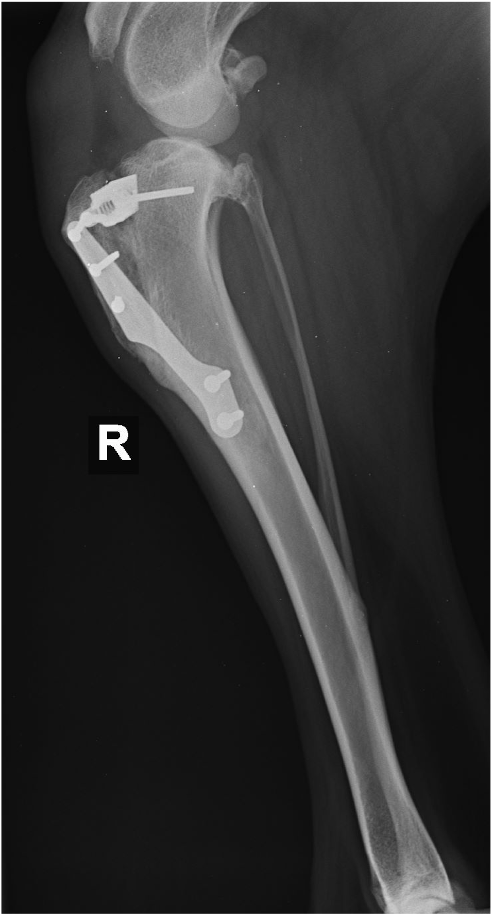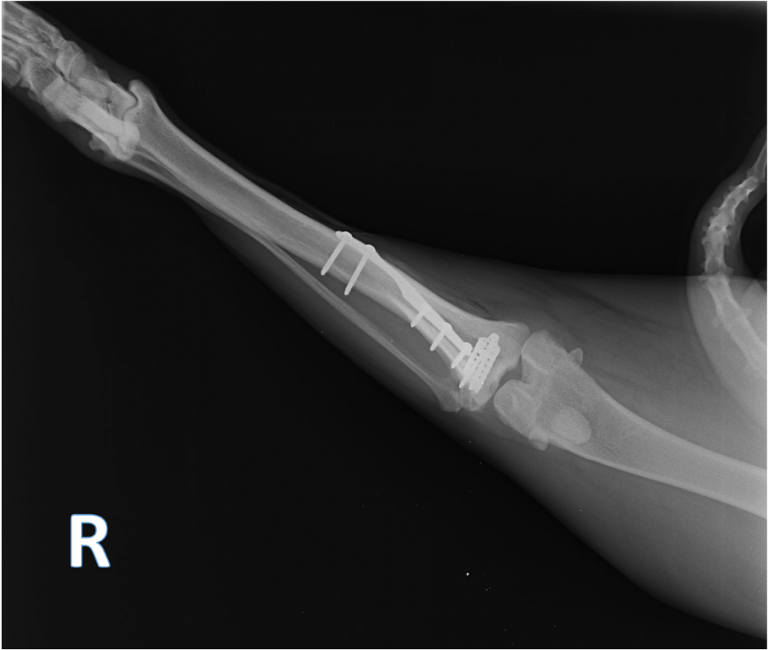Cruciate Disease
A common cause of lameness in the hind leg of a dog is the partial or complete rupture of the cranial or anterior cruciate ligament. Typically, this issue is seen in large and giant breed dogs from as early as 3-5 years old while smaller dogs tend to develop problems later when they are 6-8 years old. Whilst the actual rupture of the ligament is typically quite acute or sudden the underlying cause termed “Cruciate Disease” is a more chronic issue.
Final rupture is typically due to a traumatic event. However, the tendency to rupture is in many cases present from birth due to the anatomy of the stifle (knee) joint. The ligament degenerates progressively over time due to ongoing use and the unusual, and perhaps slightly illogical, anatomy of the canine stifle. The ligament may become stretched or partially torn and lameness may be only slight and intermittent, but a process of inflammation, or arthritis, is occurring in the joint at the same time. With continued use of the joint, the condition gradually gets worse until rupture occurs in the course of normal activity.
Most experienced veterinarians will be able to make a presumptive diagnosis on careful clinical examination of your dog. Confirmation of the diagnosis involves several steps and it is important these are completed to ensure the correct diagnosis is made.
Dogs under 10kg with a ruptured cruciate may improve to an acceptable level without surgery. In particularly aged patients, surgery is less desirable usually for various other health reasons. These patients are on restricted activity for 2-4 weeks but if a limp remains or recurs intermittently, surgery is the only option for a complete recovery. Dogs over 10kg nearly always require surgery to heal. Unfortunately, most dogs will eventually require surgery to correct this painful injury.
There are several ways that repair, and stabilisation of the joint can be achieved. Selection of technique depends on what is best for your dog’s size, age and condition.
At Caulfield Veterinary Hospital, our experience has shown the greatest prognosis with the DeAngelis technique (extra-capsular repair) or a TTA technique (Tibial Tuberosity Advancement).
It is important you visit one of our veterinarians if your pet is suffering from:
- Lameness (either sudden or on-and-off over a period of time)
- Swelling
- Holding up their leg
- Not weight bearing
- Sitting with a hind leg extending out from under the body; and/or
- Placing more weight on their front legs than their hind legs as they move from sitting to standing.
We have collated an information pack regarding cruciate disease diagnosis, surgery and recovery based on our extensive experience in managing this condition. If you are interested in a copy, please fill in the form below and we will send this through to you.


